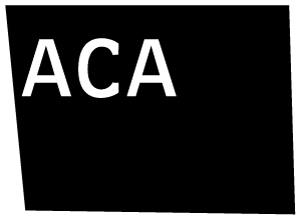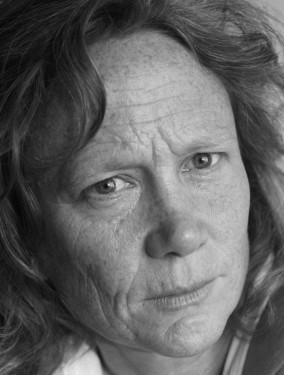Residency Dates: June 25, 2017 - July 15, 2017
Application Deadline: January 22, 2017
Jennifer Monson is a choreographer, performer, teacher and dance curator who balances her artistic research and choreographic work between New York City and the University of Illinois Urbana Champaign. Since 1983, she has explored strategies in choreography, improvisation and collaboration in experimental dance. In 2000, her work took on a radical new trajectory towards the relationship between dance and environment. This has led her into an investigation of cultural and scientific understandings of large-scale phenomenon such as animal navigation and migration, geological formations such as aquifers and re-functioned sites such as the abandoned Ridgewood Reservoir. These investigations provide the means to unearth and inquire into choreographic and embodied ways of knowing and re-imagining our relationship to the environments/spaces we inhabit. Her project BIRD BRAIN (2000- 2005), iMAP/Ridgewood Reservoir (2007) and the Mahomet Aquifer Project (2008-2010) and SIP (sustained immersive process)/watershed (2010) are projects that have radically reframed the role dance plays in our cultural understandings of nature and wilderness. By bringing the work into outdoor settings and creating a framework for viewing the work through workshops, panel discussions and community involvement, she has found ways to re-engage the general public in a heightened physical and sensory experience of the phenomena and systems that surround us. Her project Live Dancing Archive (2012) proposes that dance systems themselves are archival bodies for the dynamics of ecosystems. The project includes an online digital archive and video installation drawing primarily on BIRD BRAIN and other environmental works. Her choreographic work has been performed in experimental New York City venues such as The Kitchen, Performance Space 122, and Danspace Project at St. Mark’s Church and Movement Research; as well as nationally. Monson’s work rigorously investigates the body as a vehicle to re-conceptualize the nature of form and to constantly renegotiate the relationships between art, environment, power, and place. She has received a wide range of foundation support for her artistic work and fellowships from the National Endowment for the Arts, New York Foundation for the Arts, The Foundation for Contemporary Art, The Lambent Foundation and the John Simon Guggenheim Foundation. She is an inaugural Doris Duke Impact Artist (2014).
In 2004 Monson founded iLAND-interdisciplinary Laboratory for Art Nature and Dance. iLAND investigates the power of dance in collaboration with other fields to illuminate our kinetic understanding of the world. It is a dance research organization with a fundamental commitment to environmental sustainability as it relates to art and the urban context, and cultivates cross-disciplinary research among artists, environmentalists, scientists, urban designers and other fields. In addition to serving as Artistic Director of iLAND, Monson is currently a professor at the University of Illinois Urbana Champaign as well as a Professor at Large at the University of Vermont, (2010- 2016) a six- year term in collaboration with dance, environmental studies and libraries faculty.
Residency Description
In the residency, we will explore the role of experimental scoring in relation to improvisation and composition. Drawing on our years of experience making scores at the intersection of dance and music, we have developed a collaborative process that includes scribing for each other immediately after improvising with specific scores. In this process, we have found that we unearth the different qualities of sonic and kinetic information that is both shared and distinct to sound and movement. From these discussions we generate new ideas and scores to research together, inevitably developing material that makes its way into new work. We share a particular interest in addressing different understandings of space, both natural and constructed, and its impact on and interaction with sonic and kinetic interventions.
The residency will focus on the idea of a score as a means to generate material, research ideas and create performances. We are interested in starting with a very small kernel of information and seeing how far we can expand it in the three weeks. We will work collectively, in small groups and individually. The process will include generating movement, sound, drawings, photographs and writing. We are interested in experimenting with different kinds of visual and text-based instructions and parameters in the scoring. Through the daily improvising and writing practice, we will each develop a score diary that can be used as a resource for making new work. This open-ended process will be adapted to the specific interests of the associate artists.
We are interested in working with artists who use sound and movement as the basis of their practice. In the past this has not been limited to music and dance artists, but has also included photographers, urban ecologists, biologists, landscape architects, architects and other visual and new media artists.
Application Requirements
1. How you define and/or use scores in your work. 1-2 pages. (.doc, .docx, .pdf)
2. A selection of 2 to 3 audio, video, or two-dimensional work samples:
– Total audio/video work sample time 20 minutes maximum: excerpts or completed work: via Sound Cloud/Vimeo/YouTube/link to your web site
– Image requirements – Up to 5 pdf or image files of scores, diagrams, drawings or photographs
3. A two-page resume or narrative biography (.doc, .docx, .pdf)
Residency Fee: $900
Includes a $100 administration fee, weekday meals and housing; does not include artist materials, transportation, or weekend meals.
Scholarships / Financial Assistance
Only accepted Associate Artists may apply for financial assistance. For details, please visit the master artist details page.

